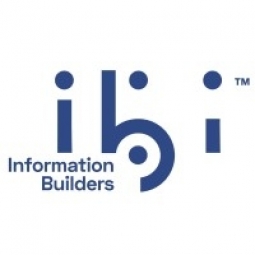Customer Company Size
Large Corporate
Region
- America
Country
- United States
Product
- WebFOCUS
- iWay Service Manager
- Developer Studio
- InfoAssist
- ReportCaster
Tech Stack
- Oracle relational database
- BI dashboards
Implementation Scale
- Enterprise-wide Deployment
Impact Metrics
- Productivity Improvements
- Revenue Growth
Technology Category
- Analytics & Modeling - Real Time Analytics
Applicable Industries
- Retail
- Food & Beverage
Applicable Functions
- Sales & Marketing
- Business Operation
Use Cases
- Predictive Maintenance
- Inventory Management
Services
- Software Design & Engineering Services
- System Integration
About The Customer
Associated Wholesalers, Inc. (AWI) is a cooperative food distributor that provides flexible distribution and business services to promote the growth and profitability of its member retailers. AWI began in the late 1950s to help a group of independent grocers compete with larger chains, but now serves thousands of retailers and earns close to $2.5 billion in revenue. AWI buys, warehouses, and resells grocery items to its members and offers a wide variety of programs and services to help them run their businesses. Independent retail stores that buy into the co-op earn dividends from AWI’s profits; enjoy greater purchasing power; and benefit from AWI’s distribution, marketing, and reporting services. AWI offers retail pricing systems, advertising programs, and point-of-sale business intelligence (BI) solutions based on each store’s transaction logs, which AWI loads into its reporting environment every day.
The Challenge
Associated Wholesalers, Inc. (AWI) is a cooperative food distributor that provides flexible business and retail services to promote the growth and profitability of its member stores. AWI began in the late 1950s to help a group of independent grocers compete with larger chains, but now serves thousands of retailers and earns close to $2.5 billion in revenue. AWI buys, warehouses, and resells grocery items to its members and offers a wide variety of programs and services to help them run their businesses. Independent retail stores that buy into the co-op earn dividends from AWI’s profits; enjoy greater purchasing power; and benefit from AWI’s distribution, marketing, and reporting services. AWI offers retail pricing systems, advertising programs, and point-of-sale business intelligence (BI) solutions based on each store’s transaction logs, which AWI loads into its reporting environment every day. Given that grocers are continually driven by a “freshness factor,” AWI has to provide its clients with up-to-the-hour data in order to deliver valuable insight. Ultimately, the company’s search for a BI environment capable of handling this challenge led Morton and his team to deploy Information Builders’ WebFOCUS BI and iWay Software integration solutions to supply accurate data and insight to its members.
The Solution
Associated Wholesalers first reached out to Information Builders as part of a modernization project that involved creating and integrating new information systems for billing, invoicing, ad planning, and other core business functions. With help from Information Builders’ Professional Services, AWI’s team deployed iWay Service Manager, which helped developers migrate data from the mainframe to an Oracle relational database, and facilitates ongoing collaboration between the new information systems. Next they used WebFOCUS Developer Studio to rewrite several key reports and deliver them automatically via WebFOCUS ReportCaster. AWI also created a series of BI dashboards. One particularly valuable executive dashboard features sales by department and commodity, updated every hour. It compares current sales metrics with data from the previous week, month, or year, and allows users to drill down and identify potential problems within each department.
Operational Impact
Quantitative Benefit

Case Study missing?
Start adding your own!
Register with your work email and create a new case study profile for your business.
Related Case Studies.

Case Study
The Kellogg Company
Kellogg keeps a close eye on its trade spend, analyzing large volumes of data and running complex simulations to predict which promotional activities will be the most effective. Kellogg needed to decrease the trade spend but its traditional relational database on premises could not keep up with the pace of demand.

Case Study
HEINEKEN Uses the Cloud to Reach 10.5 Million Consumers
For 2012 campaign, the Bond promotion, it planned to launch the campaign at the same time everywhere on the planet. That created unprecedented challenges for HEINEKEN—nowhere more so than in its technology operation. The primary digital content for the campaign was a 100-megabyte movie that had to play flawlessly for millions of viewers worldwide. After all, Bond never fails. No one was going to tolerate a technology failure that might bruise his brand.Previously, HEINEKEN had supported digital media at its outsourced datacenter. But that datacenter lacked the computing resources HEINEKEN needed, and building them—especially to support peak traffic that would total millions of simultaneous hits—would have been both time-consuming and expensive. Nor would it have provided the geographic reach that HEINEKEN needed to minimize latency worldwide.

Case Study
Improving Production Line Efficiency with Ethernet Micro RTU Controller
Moxa was asked to provide a connectivity solution for one of the world's leading cosmetics companies. This multinational corporation, with retail presence in 130 countries, 23 global braches, and over 66,000 employees, sought to improve the efficiency of their production process by migrating from manual monitoring to an automatic productivity monitoring system. The production line was being monitored by ABB Real-TPI, a factory information system that offers data collection and analysis to improve plant efficiency. Due to software limitations, the customer needed an OPC server and a corresponding I/O solution to collect data from additional sensor devices for the Real-TPI system. The goal is to enable the factory information system to more thoroughly collect data from every corner of the production line. This will improve its ability to measure Overall Equipment Effectiveness (OEE) and translate into increased production efficiencies. System Requirements • Instant status updates while still consuming minimal bandwidth to relieve strain on limited factory networks • Interoperable with ABB Real-TPI • Small form factor appropriate for deployment where space is scarce • Remote software management and configuration to simplify operations

Case Study
Energy Management System at Sugar Industry
The company wanted to use the information from the system to claim under the renewable energy certificate scheme. The benefit to the company under the renewable energy certificates is Rs 75 million a year. To enable the above, an end-to-end solution for load monitoring, consumption monitoring, online data monitoring, automatic meter data acquisition which can be exported to SAP and other applications is required.

Case Study
Coca Cola Swaziland Conco Case Study
Coco Cola Swaziland, South Africa would like to find a solution that would enable the following results: - Reduce energy consumption by 20% in one year. - Formulate a series of strategic initiatives that would enlist the commitment of corporate management and create employee awareness while helping meet departmental targets and investing in tools that assist with energy management. - Formulate a series of tactical initiatives that would optimize energy usage on the shop floor. These would include charging forklifts and running cold rooms only during off-peak periods, running the dust extractors only during working hours and basing lights and air-conditioning on someone’s presence. - Increase visibility into the factory and other processes. - Enable limited, non-intrusive control functions for certain processes.








